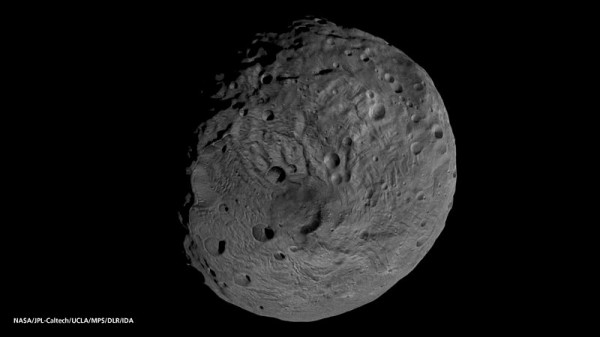
As it turns out, Vesta is a great illustration of the power of chance in the universe. Data collected by Dawn is showing that, once upon a time, this asteroid was on its way to planethood. But, for several reasons, it simply never grew large enough. From Science News:
... according to Dawn observations, Vesta did indeed agglomerate enough rocky debris as it grew to heat itself by the decay of the rock's radioactive elements. That heat led to the separation of the primordial body into a rocky crust, an underlying rocky mantle, and a central metallic core, hallmarks of planet Earth and the other rocky planets. Dawn was the first to detect Vesta's now-solid core.Vesta isn't unique in this, but it does provide an interesting moment to stop and think a little bit about randomness and the process of planetary birth. This news about Vesta is a nice reminder that there's really no reason why our solar system has to have eight planets. It could have had fewer. It could have had more. And some bodies—like Ceres and Pluto—are really only a trick of taxonomy away from being planets.


No comments:
Post a Comment